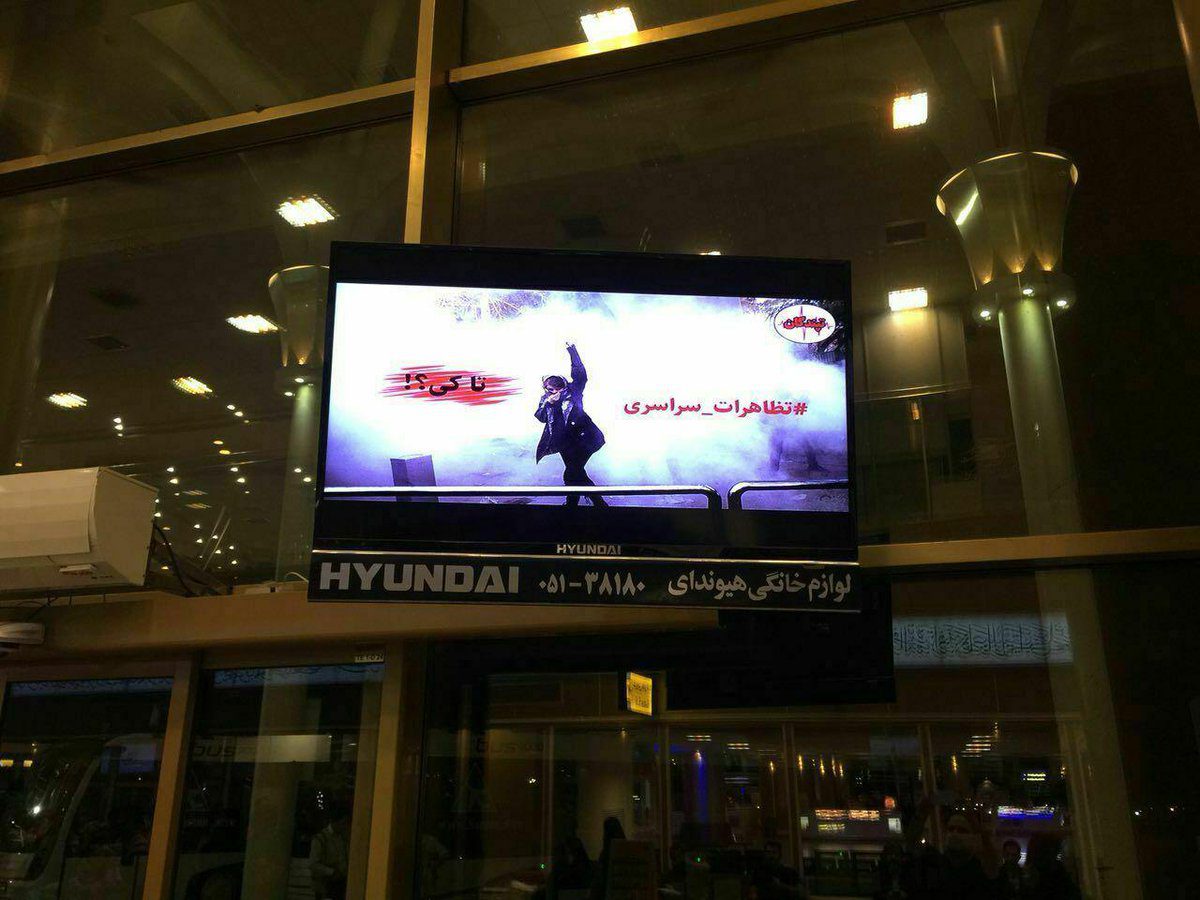
On Thursday (May 24), the airport in Mashhad, northeastern Iran, was attacked by a group of unidentified hackers. The electronic display at the airport was hijacked by hackers and a declaration of protest was issued to the Iranian government.
According to RadioFarda, hackers left some images on the electronic screen at the airport entrance and exit, showing a statement protesting the Iranian government’s military presence in the Middle East.
Hackers take control of monitors at Iran's Mashhad Airport displaying signs in support of #IranProtests. The signs reads "How much longer?" and carry the Farsi hashtag calling for nationwide protests. #اعتراضات_سراسری#FreeIran2018 #IranRegimeChange (May 24, 2018) pic.twitter.com/y5J7CzLiek
— M. Hanif Jazayeri (@HanifJazayeri) May 25, 2018
The statement was presented in Persian and accused the Islamic Revolution Guards Corps (IRGC) of wasting Iranian life and financial resources in Lebanon, Syria, and Gaza.
The hacking group, who claims to be Tapandegan (Palpitaters) expressed support for the protests in Kazeroon County, Fars Province, Iran. The protests have continued for several months.
The report pointed out that the reason why the organization was able to hijack the electronic display and publish images came from their successful incursion into the e-mail address of Mohsen Eidizadeh, head of Civil Aviation Department of Mashhad Airport. In addition, the organization also encouraged passengers to take pictures of electronic screens and use the hashtag “Protests_alloverthecountry” to publish through social media platforms.
According to the survey conducted by Radio Falda, hundreds of Iranians have posted photos of electronic displays via Twitter. As Twitter users in Iran fear that the government will suppress the incident, posters use mostly fictitious usernames such as Dr. Zhivago and Godless.
Radio Falda pointed out that Mashhad was the city where large-scale anti-government demonstrations began on December 28, 2017, and it has spread to more than 100 other Iranian cities. It is also Iran’s second largest city. The religious city where the eighth Shi’ite Imam Shrine is located, local authorities and clerics are among the most determined hardliners.